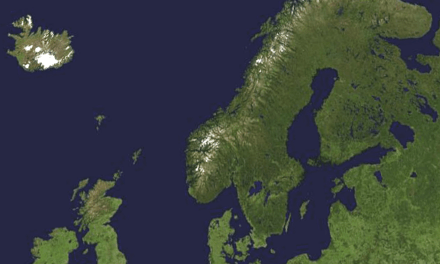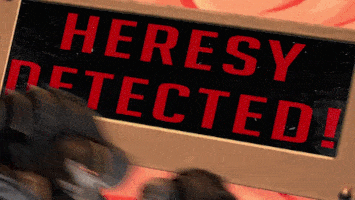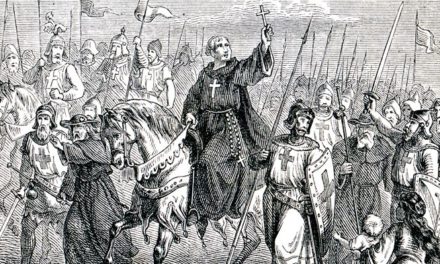This episode is the first of several I’m calling “The Long Road to Reform.” As I mentioned at the end of the last episode, we’ll track the Church’s long march to the Reformation, then pause before picking it up acwith THE Reformation by doing some episodes tracking Church History into the East.
Until recently, most treatments of the History of Christianity have focused almost exclusively on the Church in Europe and what’s often called “Western” Christianity. Mention is made of the Church’s growth into other regions like North Africa, and the Middle and Far East. But it’s barely a nod in that direction. For every 10,000 words devoted to the Church in Europe, 10 are given to the Church of the East. What’s sad is that this Church has a rich history. We won’t make up for the lack of reporting on the history of the church in these regions, but we will seek to fill in some of the gaps and give those interested resources for learning more.
Okay, here we go. We embark now on The Long Road to Reform.
At the dawn of the 13th C with Innocent III, the papacy reached the zenith. The Dominicans and Franciscans carried the Gospel far and wide, new universities were hotbeds of theological enterprise, and Gothic Cathedrals seemed to defeat the law of gravity.
Europe was united under the pope and the emperor; in theory at least. Because the Crusaders had taken Constantinople, the breach between East and West looked to have been finally healed. Yeah – it looked like Christendom was about to enter a Golden Age.
As is often the case, looks can be deceiving. These were.
By 1261, the West’s influence in Constantinople was over as well as the bogus union the 4th Crusade claimed to have forged. Over the next 2 centuries, Europe saw several changes that set the scene for the modern world.
One of the most important was in the realm of economics.
When we think of the Middle Ages in Europe, we remember feudalism with its strict rules of class. There was the land-owning nobility and the commoners, serfs who worked the land for nobles in exchange for protection. We don’t have time to go into it here, but feudalism was largely the result of developments in the technology of warfare. Armored warriors, called knights, were expensive. It took a vast economic base to field them. So serfs worked lands in exchange for protection by knights. These serfs gave loyalty, called fealty, to nobles in ever higher levels from counts and barons to dukes and earls, with the king at the top. A third class in this tiered structure of medieval society were the clergy. The Church also owned lands and had serfs who worked for them. This made priests and abbots responsible for the secular rule of church and monastery estates. But toward the end of the Middle Ages, the cities of Europe began to grow and a new class of commoner emerged – the merchant.
There were several reasons for the proliferation of merchants and the growth of villages into town and towns into cities. One of the most important was the boom in trade. The Crusades stimulated Europe’s taste for new things. Someone needed to buy up what Europe produced, which was a lot of wool, and take it to the East were all the goodies were. Increased trade meant increased wealth for merchants, who weren’t land-owners but who did buy themselves nice homes in the growing cities. Those houses needed furniture and art and all the other luxuries that mark a successful merchant so industries popped up to supply those wants – bringing even MORE to the cities. New credit systems were developed as extra money meant people looking to invest for a profit. And slowly but surely, a NEW social class developed – the middle-class who didn’t fit the strict class structure that had dominated Europe for several hundred years. When nobles began taxing the trade crossing their land, the merchants protested and called for a stronger central government that would reign in the nobles. A king could protect trade, quash the bandits that harassed caravans, establish a common currency, and put an end to silly conflicts that disrupted trade.
Kings saw the merchants and emerging middle-class that supported them as a way to do an end run around the nobles who so often gave them grief. The king didn’t have to depend now on those nobles to supply knights and men at arms. From the taxes raised from the middle-class, they could field their own army.
The growth of strong kings during the late Middle Ages in Europe goes hand in hand with the rising middle-class. And it’s out of this process the modern nations of Europe emerged. Regions that shared a common language and culture coalesced around strong central governments. So, nationalism became one of the factors that will lead to problems for the Church. Until the 13th Century, Europeans identified themselves by their town, city or county. By the 15th Century they identified themselves as English, French, Swedish …
Where this emerging nationalism effected the Church was when a pope leaned in his policies toward this nation or that. When he did, that nation or this ignored his rule. And this led to the overall denigration of the pope’s office and authority. That in turn led to not a few looking to someone other than the Pope to lead in reform of the Church.
What’s often neglected in a discussion of the roots of the Reformation is the impact of the Hundred Years’ War on Church History. Lasting almost 140 yrs, from 1337 to 1475, the war dragged in almost all of Europe at one point or another. Basically a conflict between France and England, it lasted so long and was filled with such intrigue, everyone seemed to want to weigh in at some point and take a few swings at the other guy.
It was during the Hundred Years’ War that a French teenager named Joan had visions that stirred her countrymen to rally behind the French prince and give the British a good run for their money. Actually, money was the perennial British problem in this War. They’d win amazing victories on the battlefield at places like Crecy and Agincourt, then have to withdraw for lack of funds.
This long conflict with all its many chapters had enormous consequences for the Church. It was during this time the so-called “Babylonian Captivity of the Papacy” took place, with the popes relocating from Rome to the French city of Avignon. Popes became virtual puppets of the French throne. So the English disregarded the papacy. Then, during the Great Papal Schism, when two rival popes vied for control of the Church, Europeans aligned under whichever pope supported their cause in the War. That made putting the Schism to an end, even MORE difficult. All of this of course, weakened the claims of the Pope to universal authority.
And what are to say of the Plague that devastated whole regions of the continent? The Little Ice Age of the 14th C set crop yields back and led to virtual famine in some places. This in turn shattered the fragile economy and set those already living hand to mouth into a physically vulnerable position. Their immune systems were degraded so when the Plague arrived, hundreds of thousands were susceptible to its ravages. Between 1348 and 50, the Black Death swept Europe. While numbers vary, with a general account of a third of Europeans dying, there were some regains were as much as HALF the population succumbed. Just imagine what that did to the social fabric of these places! Well, imagine what it would be like living where you do with only half the people. For those in urban centers, that may sound like a dream come true – at first. But realize half those who die are the only ones with the know-how or skill to do a good part of the work that keeps your system running. Half the houses are now empty. Half the stores, closed. You get the idea.
The Plague sent a shockwave through the collective conscious of Europe. How could a society so dominated by Christianity have suffered such a devastation? Maybe the Church had gone astray so badly God’s wrath was in evidence. Could the Black Death be His way of cleaning house? While life had always been precarious, death now hovered over all, so life became little more than preparation for life after death. Pilgrimages to Rome and Jerusalem were sought. The poor who couldn’t make such a journey went on local pilgrimages to local holy spots. Trade in relics boomed, even though the Fourth Lateran Council tried to put a kibosh on it.
In the mid-15th Century, when it was clear the Turks were determined to take Constantinople, the Byzantine emperors appealed to the West for help, even though the 4th Crusade had been a colossal failure. In trade for assistance, the popes required the East affirm their loyalty to Rome. Under threat of imminent demise, the East agreed to terms at the Council of Ferrara in 1439. But the Pope wasn’t able to persuade the Knights and armies of Europe to go to the aid of Constantinople. In the East, many of the Christians there saw the emperor’s bowing to Rome as a capitulation to heresy. They refused to fight for him or his cause. In 1443, the patriarchs of, Alexandria, Antioch, and Jerusalem rejected the Council’s decisions and broke communion with Constantinople. In 1452, after more than 400 yrs of animosity, a Roman mass was celebrated in Hagia Sophia. But Constantinople’s days were numbered. A year later, Muhammad II laid siege to the City. His new guns punched holes in those once impregnable walls. Emperor Constantine XI died defending the City. The great Hagia Sophia became a mosque and the city was renamed Istanbul.
It was King Philip IV of France who managed to wrap the papacy tightly around his finger. His long contest with Pope Boniface VIII is what helped lead to the Avignon Papacy and Great Schism.
The next Pope was Benedict XI. A Dominican of genuine piety who sought to undo the acrimony Boniface had managed to stir up across Italy and France. Despite Benedict’s attempts at harmony, King Philip insisted on calling a council to condemn the acts of Boniface. Benedict refused as it would be yet another denigration of papal authority at the hands of the French monarch. But this wasn’t enough for the conservatives regarded Benedict’s reconciliatory acts as giving away of too much papal mojo. He died after only a year as Pope.
A rumor spread he’d been poisoned; both sides claiming the other had done the deed. And by both sides, I mean those French cardinals who backed Philip and the Italian, German and English cardinals who backed Rome. Except for those who didn’t. Yeah, I know it gets confusing. è Welcome to church history.
Through a clever bit of subterfuge, the French cardinals wrangled an agreement to elect Clement V. Clement seemed to be a neutral candidate, when he’d in fact been scheming with the French all along. During his term as Pope, from 1305-14, he never visited Rome even once.
He appointed 24 cardinals; all but 1 of them, French; ensuring the next several Popes would also be a pro-French interest. Several of these cardinals were his relatives. While Clement V’s papacy was abysmal, probably the most shameful moment was his consent to the destruction of the Templars.
The Templars were one of the military orders founded during the Crusades. Since the Crusades were over, the Templars were really obsolete. But they were incredibly wealthy and powerful. This was at a time when King Philip was on a campaign to assert his absolute dominance over all French nobility. The Templars were an obstacle to overcome as they provided both funds and arms to the very nobles Philip wanted to subjugate. He also owed them a considerable sum in the loans he’d taken from them. So in a fascinating tale of intrigue, Philip persuaded others to do his dirty work for him. He had the Templars accused of disgusting crimes, besides the more pedantic evil of heresy. Under torture, some Templar leaders confessed, including their Grand Master, Jacques de Molay. De Molay later recanted his confession, but it was too late. He and a companion were executed. The Templars were disbanded, their wealth confiscated by the French Crown.
We’ll pick it up at this point next time.






Hi, first of all let me say that I love this podcast and think you are handling such a diverse and delicate subject very well.
I would like to just point out a couple of historical inaccuracies in this episode though. Firstly, you mentioned that the hundred years was was between Britain and France. Actually it was between England together with her allies and France together with hers. Britain did not exist as a political entity at the time. Also, Scotland, which is a part of Britain, was on the French side.
Also, you mentioned that the Turks changed the name of Constantinople to Istanbul when they took it over. The name did not actually officially change until after world war one. Before then it was just a mispronounced way of saying Constantinople.
Sorry to sound pedantic. The British/English thing is really irritating though to an Englishman in Scotland as I am.
A great podcast though.
Les,
Thanks for the feedback. I appreciate this kind of correction.
Les, is there a difference between the connotative and denotative definitions of “Britain” and “England.” Please enlighten me as to the differences both c & d, if you;d be so kind. I’ve often wondered about this and since you jumped in, please help me sort it all out. I’ve always assumed “British” was more an ethnic term for a specific group of people while “English” referred to an amalgam of groups. Your comment makes me question that. So please correct me.
Lance
Lance,
Thanks for your prompt reply.
The term Britain can have a number of uses. Firstly it can refer to these islands (not including Ireland) as a whole. In that sense Britain was around in the middle ages. However, politically the main Island is divided into three countries. England, Scotland and Wales. England was formed by the various Germanic peoples who came over here in the 6th(ish) century. Usually their collectively called the Anglo Saxons. England is the biggest of the three countries and annexed Wales in the early portion of the middle ages (a few bits just after the Norman Conquest and the rest of it in the 1270’s). The Welsh would vehemently protest against anyone who would call them English; they are most of what remains of the original romano-british celts. Scotland was formed by the Scotti who came over from Ireland about the time of the Roman withdrawal and conquered the land of the Picts at the top end of the island. Many border wars during the dark ages finally led to the current border between England and Scotland. Thanks in part to the attempt of Edward I of England to conquer Scotland in the 1270’s, the Scots have a deep routed mistrust of the English. However, in 1603 James VI of Scots inherited the English throne and thus began the beginnings of the political entity known as Great Britain. Even today, the Scots can still be very anti English and an extremely independently minded people. They too hate being referred to as English. Although the term British was being used as a collective term for Scottish, English and Welsh soon after the union of the crowns mentioned above, it really did not become a true political entity until 1707 when with one political arm twisted behind its back the Scottish parliament signed the Act of Union and hopped over the border to join with the English Parliament in Westminster.
So, it’s all confusing stuff but we are basically three countries in union. Great Britain is the collective political entity and the three of us are England, Wales and Scotland. To add to the confusion, the channel Islands are actually not English but are the last part of the Duchy of Normandy in the hands of the British Monarch.
A further layer of confusion was added when the Irish Act of Union was signed in 1801. This then formed the United Kingdom of Great Britain and Ireland. Since partition in the early 20th Century this has become The United Kingdom of Great Britain and Northern Ireland. Though we just call in the UK.
Another confusing bit is that the UK team in the Olympics is called Team GB.
I hope this goes some way to helping answer your question.
The thing to remember about the middle ages though is that whatever side England was on, the Scots were usually on the other.
I forgot to say that the English, Scots and Welsh would all accept that we are British but not all English. So one person may be Scottish and British, another English and British, and a third Welsh and British. We are though distinct peoples.
Thanks for the clarification Les.
Lance